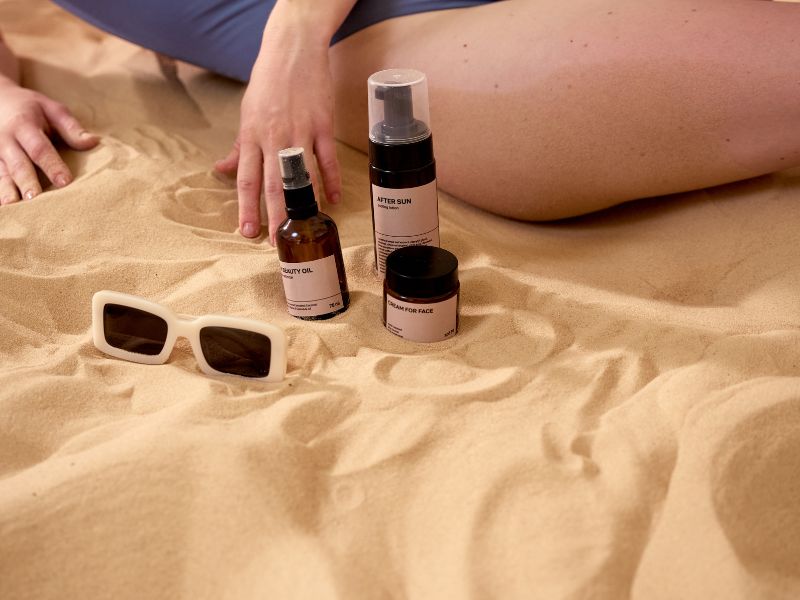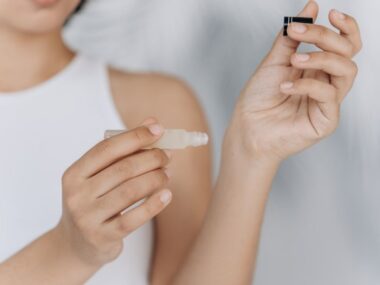Sunscreen is essential for protecting our skin from the harmful effects of ultraviolet (UV) radiation, yet it has a notorious reputation for causing eye irritation and discomfort. Many people experience a burning sensation when sunscreen inadvertently comes into contact with their eyes, which can lead to temporary pain, tearing, and redness. But why does this happen, and what can be done to prevent it? This article explores the science behind why sunscreen burns eyes, provides tips to avoid eye irritation, and suggests alternatives to make sunscreen use more comfortable and effective.
Understanding the Ingredients in Sunscreen
To understand why sunscreen might cause eye irritation, we must look closely at the ingredients commonly found in these products. Sunscreens are broadly categorized into two types:
- Chemical Sunscreens: These contain organic (carbon-based) compounds, such as oxybenzone, avobenzone, octisalate, and octinoxate. Chemical sunscreens work by absorbing UV radiation and transforming it into heat, which is then released from the skin.
- Physical (Mineral) Sunscreens: These sunscreens use inorganic compounds like zinc oxide and titanium dioxide. Physical sunscreens act as a barrier on the skin, reflecting UV radiation away from the skin surface.
Both types of sunscreen can contribute to eye irritation, but the reasons differ based on the type of ingredients used.
Common Irritants in Chemical Sunscreens
Chemical sunscreens are designed to absorb UV radiation, but they can sometimes be harsh on sensitive skin and eyes. Some key ingredients commonly found in chemical sunscreens that contribute to irritation include:
- Oxybenzone: This chemical is often found in sunscreens for its effectiveness in protecting against UVB and short UVA rays. However, it is also one of the most commonly reported irritants, especially around sensitive areas like the eyes.
- Avobenzone: Another popular UV filter, avobenzone, can cause eye irritation if it migrates or seeps into the eyes. It can also break down in sunlight and may become more irritating after prolonged sun exposure.
- Octinoxate: This ingredient is known for its skin-penetration ability, which allows it to absorb well into the skin. However, when mixed with water (like sweat), octinoxate can cause stinging and discomfort if it reaches the eye area.
Common Irritants in Physical Sunscreens
Physical sunscreens tend to be less irritating to the skin and eyes, but they can still cause discomfort under certain circumstances:
- Zinc Oxide and Titanium Dioxide: These compounds are generally considered to be gentler on the skin, making them a popular choice for sensitive areas. However, they can still cause a gritty or stinging sensation if they accidentally enter the eyes.
The primary reason these ingredients cause discomfort in the eyes is due to their intended function—to form a protective layer on the skin and prevent UV radiation from penetrating the skin. When these particles or chemicals come into contact with the moist, sensitive tissue around the eyes, they can provoke a mild to severe burning sensation.
The Science Behind Eye Irritation from Sunscreen
The burning sensation experienced when sunscreen gets into the eyes is largely due to the body’s natural response to foreign substances. Here’s how it works:
- Tear Film Disruption: The human eye has a thin layer of tears, called the tear film, that serves as a protective barrier against contaminants. When sunscreen enters the eye, it disrupts this tear film, leading to irritation, stinging, and a feeling of dryness.
- Chemical Reaction in the Eye: Some ingredients in sunscreen, particularly the chemical filters, may cause a mild chemical reaction when they come in contact with the eye’s natural fluids, leading to stinging or burning. For example, oxybenzone and avobenzone can break down into smaller molecules when exposed to sunlight, increasing their potential to cause irritation.
- pH Imbalance: The eye’s pH level is slightly alkaline, around 7.4, while many sunscreens have a slightly acidic pH level (between 5 and 7). When sunscreen with a different pH level enters the eye, it can cause discomfort due to the sudden change in the eye’s natural environment.
Why Sunscreen Migration to the Eyes Occurs
Sunscreen migration to the eyes is a common issue, especially when applied to the face. Here are a few reasons why this happens:
- Sweating and Water Exposure: Sunscreen applied to the forehead or near the eyes can easily mix with sweat, which then drips down into the eye area. Swimming can also cause sunscreen to wash off and enter the eyes, even if it’s a “water-resistant” formula.
- Oil-Based Formulas: Many sunscreens contain oils or emollients that help them adhere to the skin and moisturize it. However, these oils can become slippery and spread, especially under hot or humid conditions.
- Improper Application Techniques: Applying sunscreen too close to the eye area increases the risk of accidental eye contact. Rubbing the eyes after applying sunscreen can also cause it to migrate into the eyes.
Tips for Preventing Sunscreen Eye Irritation
Preventing sunscreen from getting into the eyes requires a combination of application techniques, choosing the right product, and being mindful of environmental factors. Here are some practical strategies:
Choose a Sunscreen Formulated for Sensitive Skin
Opt for sunscreens labeled as “sensitive,” “tear-free,” or “eye-safe.” These formulations typically use gentle ingredients that are less likely to cause irritation. Mineral sunscreens with zinc oxide and titanium dioxide are generally gentler on the eyes than chemical sunscreens.
Apply Sunscreen Carefully
- Avoid the Immediate Eye Area: When applying sunscreen to your face, try to avoid the immediate area around your eyes. Focus on applying it to the forehead, cheeks, and other areas and blend it outward without getting too close to the eyelids.
- Use Sunscreen Sticks: Sunscreen sticks are less likely to run or drip compared to creams or lotions. They provide precise application and can be easier to control, especially around sensitive areas.
Reapply Mindfully
After sweating or swimming, be cautious when reapplying sunscreen. Gently pat dry your skin and apply sunscreen, taking care to avoid the eye area. If you are prone to sweating, consider wearing a sweatband or cap to prevent sunscreen-laden sweat from dripping into your eyes.
Use Sunglasses for Extra Protection
Wearing sunglasses is a great way to protect your eyes from UV radiation while also reducing the chance of sunscreen getting into your eyes. Look for sunglasses with a UV protection label for the best coverage.
What to Do If Sunscreen Gets in Your Eyes
Despite your best efforts, sunscreen can still occasionally get into your eyes. Here’s how to handle it:
- Flush with Water: Rinse your eyes with cool, clean water as soon as possible. This will help remove the sunscreen and alleviate the burning sensation. You can use an eye rinse solution if available.
- Avoid Rubbing: Rubbing your eyes can make the irritation worse and may spread sunscreen further. Instead, gently blot the area around your eyes with a clean, damp cloth.
- Use Eye Drops: If your eyes feel dry or uncomfortable after rinsing, consider using lubricating eye drops. Avoid drops with redness-reducing ingredients, as they can exacerbate irritation.
If the irritation persists or worsens, it’s wise to seek medical advice, as some individuals may have a sensitivity or allergic reaction to certain sunscreen ingredients.
Alternative Sun Protection Methods
For individuals who are especially sensitive to sunscreen or find it too bothersome to wear around the eyes, there are alternative ways to protect delicate facial skin from UV exposure:
Wear Protective Clothing and Hats
A wide-brimmed hat or cap can provide additional shade and protection, especially for the face and neck. Look for hats with a UPF (Ultraviolet Protection Factor) rating, which offers better UV protection.
Use a Mineral-Based Sunscreen Powder
Sunscreen powders contain mineral-based sunblocks that can be lightly dusted on the face, reducing the risk of migration into the eyes. They’re especially useful for reapplication throughout the day.
UV-Protective Sunglasses and Face Shields
Invest in high-quality sunglasses with UV protection. Some sunglasses are also available with wraparound designs, offering additional protection from sunlight entering at different angles. For those with sensitive skin, a face shield or UV-protective visor can offer full coverage without the need for applying sunscreen near the eyes.
Choosing the Right Sunscreen for Eye-Sensitive Individuals
If eye sensitivity is a recurring issue, consider using sunscreens specifically formulated for sensitive skin or children, as these typically contain fewer irritants. Look for products that are labeled:
- Fragrance-Free and Paraben-Free: Fragrances and preservatives can cause additional irritation, especially near the eyes.
- Non-Comedogenic and Oil-Free: These formulations are less likely to cause sweating or greasy residue that can migrate into the eyes.
- Broad-Spectrum and Water-Resistant: Broad-spectrum sunscreens protect against both UVA and UVB rays, while water-resistant formulas are less likely to wash off in water or with sweat.
Conclusion
The burning sensation that many people experience when sunscreen gets into their eyes is a common yet avoidable issue. Understanding the ingredients in sunscreen and how they interact with the eyes can help us take steps to prevent this discomfort. By choosing the right products, applying them carefully, and exploring alternative sun protection methods, you can safeguard both your skin and eyes from the harmful effects of the sun.






